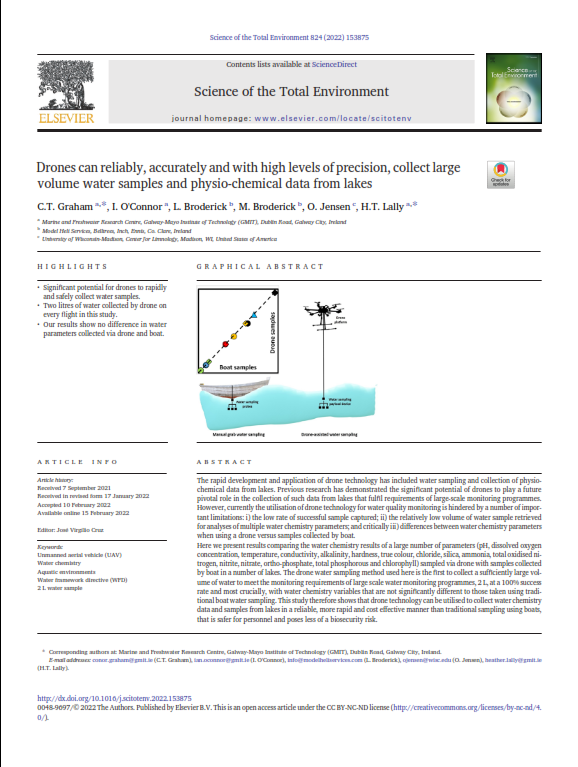| dc.contributor.author | Tahar, Alexandre | |
| dc.contributor.author | Tiedeken, Erin Jo | |
| dc.contributor.author | Rowan, Neil J. | |
| dc.date.accessioned | 2019-03-11T12:08:08Z | |
| dc.date.available | 2019-03-11T12:08:08Z | |
| dc.date.copyright | 2018 | |
| dc.date.issued | 2018-03 | |
| dc.identifier.citation | Alexandre Tahar, Erin Jo Tiedeken, Neil J. Rowan. Occurrence and geodatabase mapping of emerging concern in receiving water and at effluence from waste water treatment plants - a first overview of the situation in the Republic of Ireland. Science of the Total Environment, Volumes 616-617, March 2018, 187-197,https://doi.org/10.1016/j.scitotenv.2017.11.021 | en_US |
| dc.identifier.issn | 0048-9697 | |
| dc.identifier.uri | https://research.thea.ie/handle/20.500.12065/2504 | |
| dc.description.abstract | This constitutes the first study to address occurrence and geodatabase mapping of the anti-inflammatory drug diclofenac (DCL) and the natural (17-beta-estradiol or E2) and synthetic (17-alpha-ethynylestradiol or EE2) estrogenic hormones in Republic of Ireland receiving waters over the period 1999 to 2015. Among these data, 317 samples came from concentration studies, while 205 were from effect-based studies. Monitoring data came from 16 waste water treatment plants (WWTPs), 23 water bodies (including rivers, lakes, marine and transitional waters) and 7 from domestic locations. Out of approximately 1000 WWPTs in the Republic of Ireland, only 16 have been monitored for at least one of these compounds of emerging concern (CECs). Diclofenac is found in treated effluents from 5 WWTPs at levels at least as high as other European WWPTs, and sometime higher. Measurements of E2 and EE2 in WWPT effluents were rare and effluents were more often evaluated for total estrogens; these CECs were generally not detected using conventional analytical methods because of limits of detection being too high compared to environmental concentrations and WFD environmental quality standards. There was good agreement between occurrence of these CEC and regional drug dispensing data in Ireland. Mapping the aforementioned data onto appropriate river basin catchment management tools will inform predictive and simulated risk determinations to inform investment in infrastructure that is necessary to protect rivers and beaches and economic activities that rely on clean water. There is a pressing commensurate need to refine/develop new analytical methods with low levels of detection for future CEC intervention | en_US |
| dc.format | PDF | en_US |
| dc.language.iso | en | en_US |
| dc.publisher | Elsevier | en_US |
| dc.rights | Attribution-NonCommercial-NoDerivs 3.0 Ireland | * |
| dc.rights.uri | http://creativecommons.org/licenses/by-nc-nd/3.0/ie/ | * |
| dc.subject | Water contamination | en_US |
| dc.subject | Sewage disposal | en_US |
| dc.subject | Water supply | en_US |
| dc.subject | Water quality management - Ireland | en_US |
| dc.title | Occurrence and geodatabase mapping of three contaminants of emerging concern in receiving water and at effluent from waste water treatment plants - a first overview of the situation in the Republic of Ireland | en_US |
| dc.type | Article | en_US |
| dc.description.peerreview | yes | en_US |
| dc.rights.access | Open Access | en_US |
| dc.subject.department | Faculty of Science and Health | en_US |





